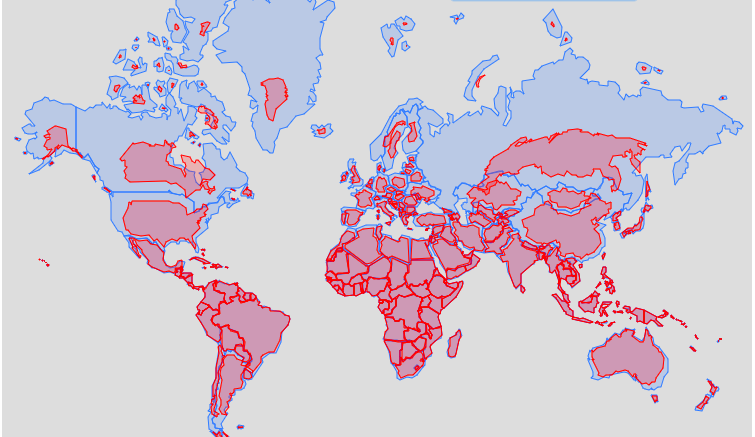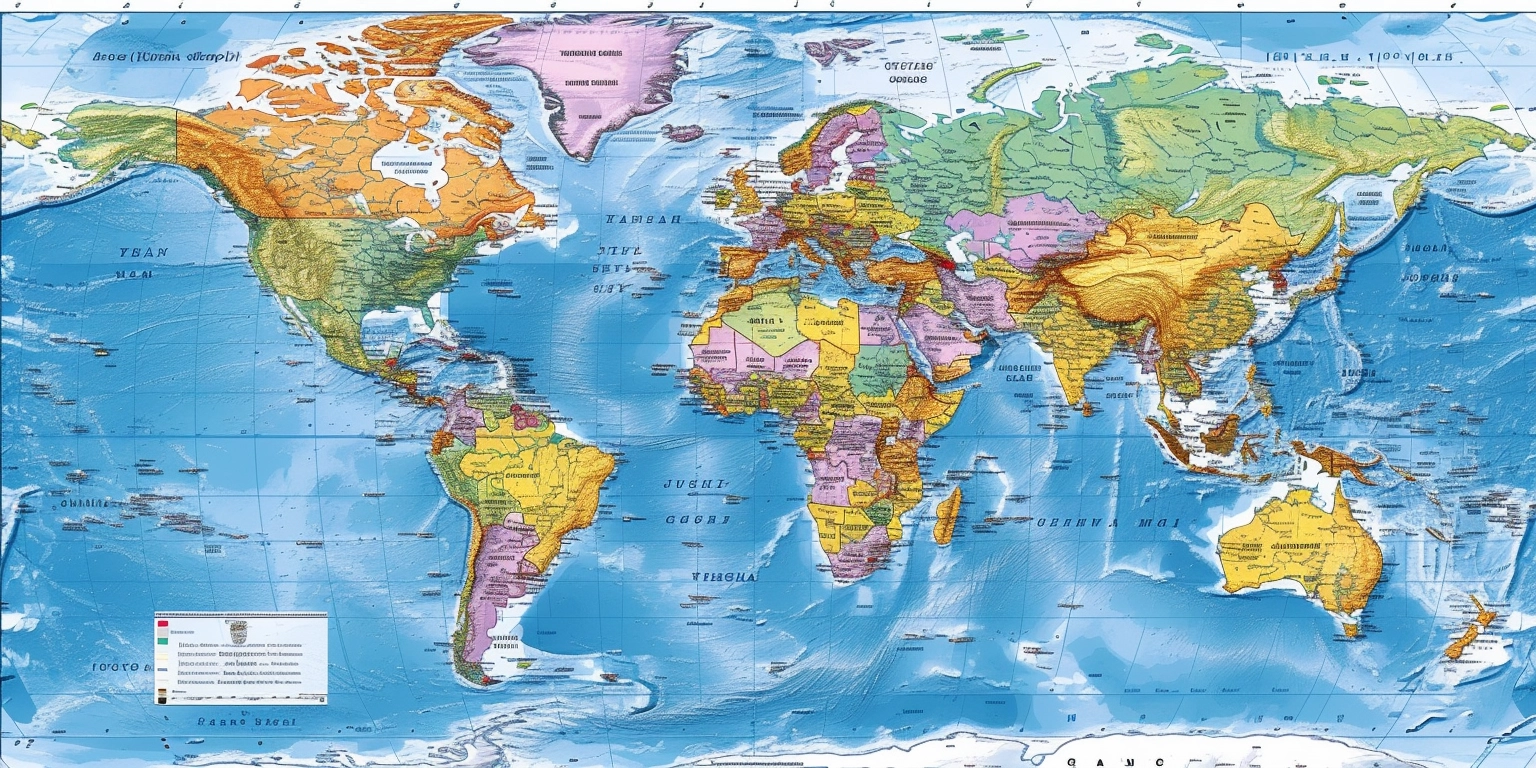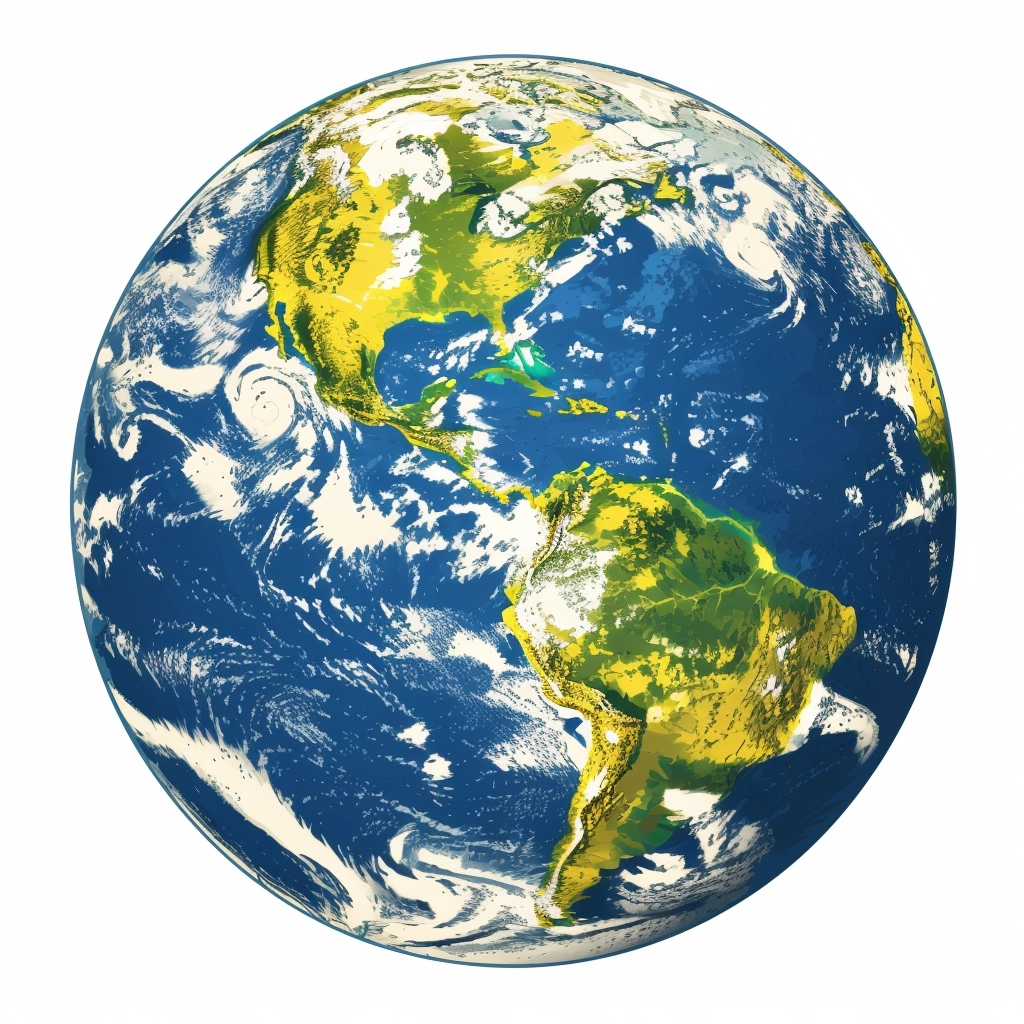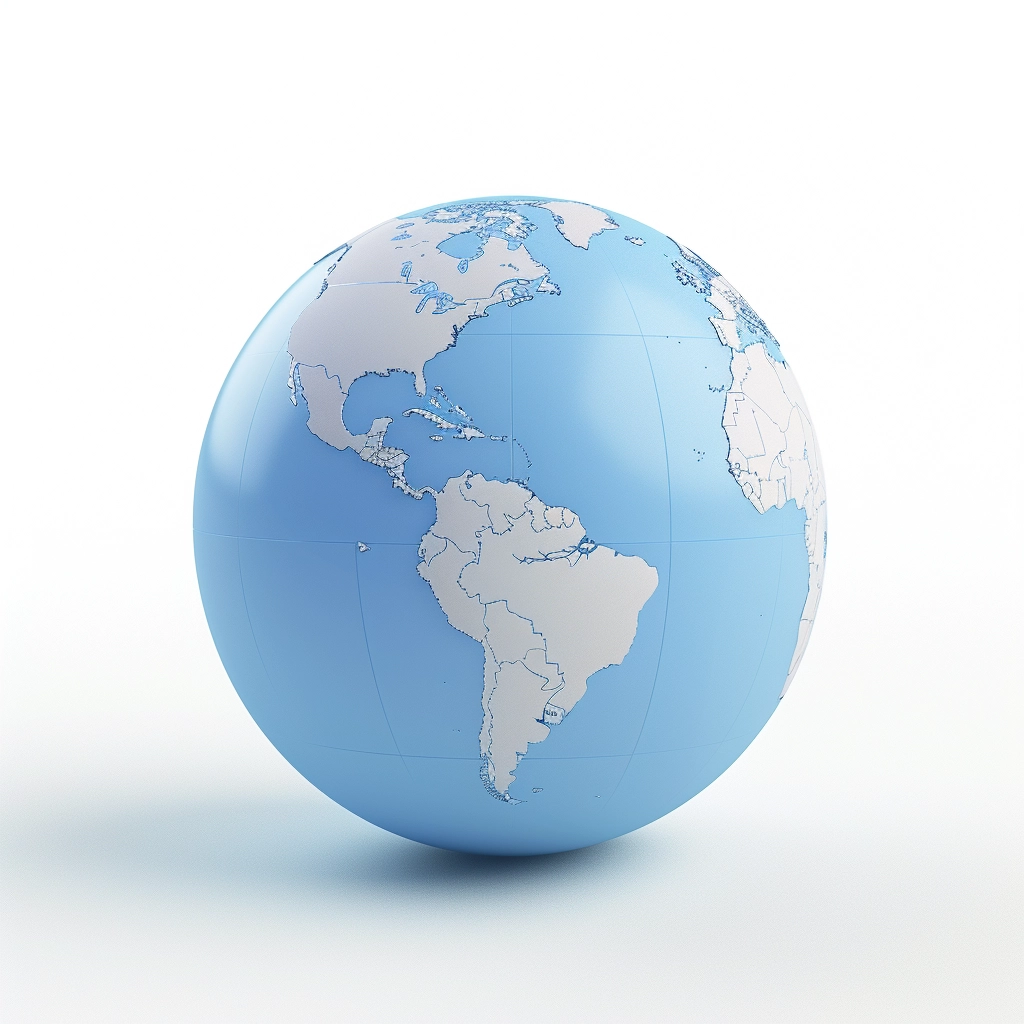Table of Contents
- 1 All World Maps are WRONG! What is the ACTUAL Size of each country!
- 2 The Mercator Projection and its limitations
- 3 Understanding map distortions
- 4 The true size of countries
- 5 Largest and smallest countries in the world
- 6 Impact of map distortions on perceptions and understanding of global geography
- 7 Alternative map projections and their advantages
- 8 Interactive tools for exploring accurate country sizes
- 9 The importance of accurate maps in education and decision-making
- 10 How accurate maps can promote cultural understanding and global cooperation
- 11 Rethinking our perception of the world through accurate maps
- 12 Author
Have you ever wondered if the world maps we use are truly accurate? It turns out, they are all wrong! When we think about the size of countries, we often rely on the maps we grew up with. However, these maps distort the true size of many places around the world. This intriguing revelation has sparked a global debate regarding the accuracy of world maps. In this article, we will dive into the fascinating world of cartography and explore why all world maps are flawed. We will uncover the truth behind why certain countries appear larger or smaller than they actually are.
Prepare to have your perception of the world turned upside down! Join us as we shed light on the secrets of cartographic representation and discover the actual size of each country. It’s time to challenge our preconceived notions and see the world in a whole new way. Get ready to have your mind blown by the surprising revelations that lie beyond the inaccuracies of our maps. Let’s embark on this eye-opening journey together!

All World Maps are WRONG! What is the ACTUAL Size of each country!
Have you ever wondered if the world maps we use are truly accurate? It turns out, they are all wrong! When we think about the hometogel size of countries, we often rely on the maps we grew up with. However, these maps distort the true size of many places around the world. This intriguing revelation has sparked a global debate regarding the accuracy of world maps.
In this article, we will dive into the fascinating world of cartography and explore why all world maps are flawed. We will uncover the truth behind why certain countries appear larger or smaller than they actually are. Prepare to have your perception of the world turned upside down!
Join us as we shed light on the secrets of cartographic representation and discover the actual size of each country. It’s time to challenge our preconceived notions and see the world in a whole new way. Get ready to have your mind blown by the surprising revelations that lie beyond the inaccuracies of our maps. Let’s embark on this eye-opening journey together!
The Mercator Projection and its limitations
The most common world map we use today is based on the Mercator projection, a cylindrical map projection presented by the Flemish geographer and cartographer Gerardus Mercator in 1569. This map projection was revolutionary in its time and was designed to aid navigation during the age of exploration. However, the Mercator projection has its flaws, and we are just beginning to understand them.
One of the primary limitations of the Mercator projection is the distortion of size. Because it’s impossible to flatten a sphere (the Earth) onto a two-dimensional plane (a map) without some distortion, the Mercator projection exaggerates the size of regions as the distance from the equator increases. This leads to large countries near the poles, like Canada and Russia, appearing much larger than they are, while countries near the equator, like the Democratic Republic of the Congo, appear much smaller.
This distortion of size is not just a minor discrepancy. It’s a significant distortion that drastically changes our perception of the world. For example, on a Mercator projection map, Greenland appears to be larger than Africa, when in reality, Africa is 14 times larger than Greenland. This is just one of the many examples of how the Mercator projection distorts our perception of the world.

Understanding map distortions
Map distortions are not a new concept. Cartographers have known about these distortions for centuries. However, the general public is largely unaware of them. The Mercator projection was not designed to accurately represent the size of countries, but rather to provide accurate directions for sailors. This meant that landmasses near the poles were greatly exaggerated in size to allow for accurate navigation.
The distortion we see in world maps is called an ‘area distortion’. This type of distortion causes countries closer to the poles to appear larger than they actually are while those closer to the equator appear smaller. This distortion has a significant effect on our perception of the world, causing us to underestimate the size of countries near the equator and overestimate the size of countries near the poles.
Understanding map distortions is crucial if we are to accurately understand the world we live in. Without this understanding, we are likely to make inaccurate judgments about the size and importance of countries. This can lead to a skewed understanding of global geography and can even influence our perceptions of different cultures and societies.
The true size of countries
Now that we understand the distortions present in world maps, we can start to uncover the true size of countries. Let’s take the example of Africa again. Africa is a massive continent with a diverse range of countries. On a Mercator projection map, it seems smaller than it is. But in reality, Africa is so large that you could fit the United States, China, India, Japan, and many European countries within its borders!
Another common misconception is the size of Russia. While Russia is indeed the largest country in the world by land area, it’s not as large as it appears on the Mercator map. On this map, Russia appears to be larger than Africa, but in reality, Africa is almost twice as large as Russia.
Similarly, Greenland appears to be about the same size as Africa on a Mercator map. But in reality, Greenland is about 14 times smaller than Africa. Greenland is actually closer in size to Algeria, the largest country in Africa. These are just a few examples of how the true size of countries can be drastically different from how they appear on a map.
Largest and smallest countries in the world
If we take into account the actual land area, Russia is the largest country in the world, followed by Canada, China, the United States, and Brazil. Despite appearing smaller on the Mercator projection, these countries are all larger than they appear.
On the other end of the scale, the smallest countries in the world are Vatican City, Monaco, Nauru, Tuvalu, and San Marino. These countries are so small that they are often represented by a single point on world maps. However, despite their small size, these countries have their own unique cultures and histories that make them just as important as larger countries.
Recognizing the true size of countries can help us better understand the world around us. It can also help us appreciate the diversity and complexity of our world, which is far more varied and interesting than a simple map can represent.
Impact of map distortions on perceptions and understanding of global geography
The distortions present in world maps have a profound impact on our perception and understanding of global geography. They influence how we see the size and importance of different countries, which in turn can affect our understanding of global issues. For example, distorted maps can give us a skewed understanding of the size of different continents, making it difficult to fully comprehend issues like climate change and population growth.
Distorted maps can also influence our perception of different cultures and societies. For example, if we believe that Africa is smaller than it actually is, we might underestimate the diversity and complexity of African cultures. Similarly, if we believe that countries like Canada and Russia are larger than they actually are, we might overestimate their importance in global affairs.
Moreover, distorted maps can also affect our understanding of history. For centuries, Western mapmakers have used the Mercator projection, which places Europe at the center of the map and exaggerates its size. This Eurocentric view of the world has influenced our understanding of history, making it seem as though Europe has always been more important than other regions.
Alternative map projections and their advantages
Given the limitations of the Mercator projection, cartographers have developed alternative map projections that provide a more accurate representation of the world. Some of these include the Robinson projection, the Mollweide projection, and the Goode’s Homolosine projection.
The Robinson projection, for instance, is an attempt to create a map that displays the entire world at once with minimal distortion. It does a better job than the Mercator at representing the size of countries near the poles, but it still distorts shape and size to some extent.
The Mollweide projection, on the other hand, is an equal-area map that preserves the size of countries but distorts their shape. This can make it easier to compare the size of different countries, but it can also make the map look strange and unfamiliar.
The Goode’s Homolosine projection is a compromise between the two, maintaining accurate sizes of countries while also trying to minimize shape distortion. It’s often used for thematic maps that need to accurately represent the size of different regions.

Interactive tools for exploring accurate country sizes
With the advent of digital technology, there are now interactive tools available that allow us to explore the true size of countries. One such tool is “The True Size Of…,” which allows you to drag and drop countries onto different parts of the world map to compare their sizes.
This tool is a powerful way to visualize the true size of countries. It allows us to see, for instance, how the United States fits into Africa, or how India compares to Europe. By using tools like these, we can gain a more accurate perception of the world and challenge the distortions ingrained in us by traditional maps.
Other tools, like Google Earth, allow us to explore the world in three dimensions, giving us a more realistic view of the world. These tools are a valuable resource for educators, students, and anyone interested in understanding the world.
The importance of accurate maps in education and decision-making
Accurate maps are not just a matter of interest for cartographers. They play a vital role in education and decision-making. In education, accurate maps can help students understand the world around them, fostering a sense of global citizenship and empathy for other cultures. They can also help students understand complex global issues like climate change and geopolitics.
In decision-making, accurate maps are essential for a wide range of fields, from urban planning to disaster management to public health. For instance, accurate maps can help urban planners design more efficient transportation networks, help disaster management teams respond more efficiently to natural disasters, and help public health officials track the spread of diseases.
By using accurate maps, we can make more informed decisions, foster a better understanding of the world, and promote global cooperation and understanding.
How accurate maps can promote cultural understanding and global cooperation
Accurate maps are a powerful tool for promoting cultural understanding and global cooperation. By accurately representing the size of countries, we can foster a more balanced view of the world, highlighting the importance of all countries, regardless of their size.
Accurate maps can also help us understand the diversity and complexity of our world. By showing the true size of countries, we can better appreciate the variety of cultures, languages, and histories that make up our world. This can foster a greater sense of empathy and understanding, promoting peace and cooperation among nations.
Moreover, accurate maps can help us better understand global issues. By accurately representing the size of countries and continents, we can gain a more accurate understanding of issues like climate change, population growth, and economic inequality. This can inform our decisions and actions, leading to more effective solutions to global problems.
Rethinking our perception of the world through accurate maps
In conclusion, it’s clear that the world maps we’ve been using are deeply flawed. They distort the true size of countries, leading to a skewed perception of the world. But by understanding these distortions and embracing more accurate maps, we can start to see the world in a new light.
Accurate maps can help us better understand the world around us, fostering a sense of global citizenship and empathy for other cultures. They can also inform our decisions, leading to more effective solutions to global problems. And perhaps most importantly, they can challenge our preconceived notions, encouraging us to see the world from a new perspective. If this exploration has piqued your interest, we invite you to continue expanding your horizons with our article on the Infinix Note 40. Embrace the journey of discovery and see the world with new eyes.

